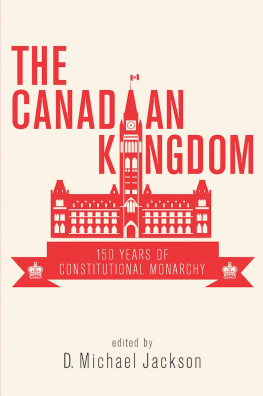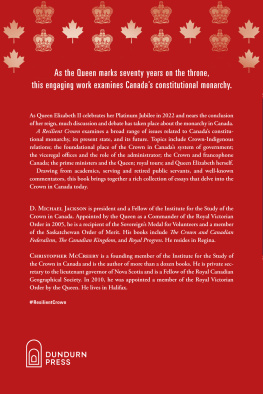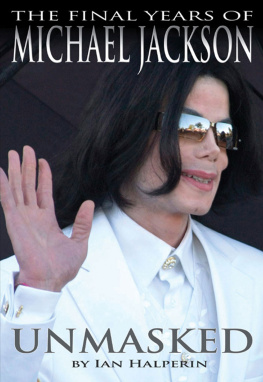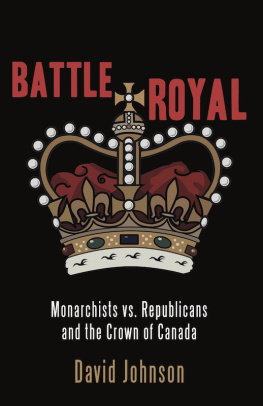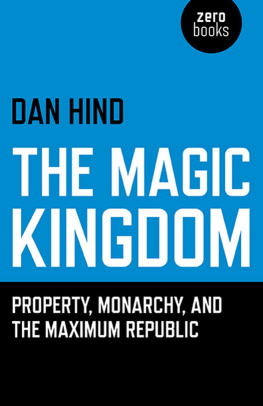Preface
T he Institute for the Study of the Crown in Canada at Massey College is pleased to sponsor this second book published by Dundurn Press. The first book, The Queen at the Council Fire: The Treaty of Niagara, Reconciliation, and the Dignified Crown in Canada, by Nathan Tidridge, appeared in 2015. It illuminated one of the most significant facets of the Canadian Crown and indeed one of the key issues facing Canada in the twenty-first century: its relationships with Indigenous Peoples, also a theme of the present volume. The Canadian Kingdom: 150 Years of Constitutional Monarchy marks the sesquicentennial of Canadian Confederation an appropriate juncture to review the historical and present role of the Crown in Canada.
About the Institute and Massey College
The Institute for the Study of the Crown in Canada at Massey College / LInstitut dtudes sur la Couronne au Canada Massey College originated in the Friends of the Canadian Crown. Formed in 2005, this was an informal network of people from a variety of backgrounds interested in promoting knowledge and understanding of the institution of constitutional monarchy in Canada.
The Institute is based at the graduate college founded at the University of Toronto in 1963 by the first Canadian-born governor general, the Right Honourable Vincent Massey. In 2017, Massey College strengthened its links with the Crown when Her Majesty Queen Elizabeth II approved the designation of its St. Catherines Chapel as the third Chapel Royal in the country and the first-ever interdenominational one. This chapel, symbolizing reconciliation, is allied to the Mississaugas of the New Credit First Nation.
The Institute commissions studies and papers dealing with the constitutional, historical, and institutional reality of the Crown in Canada. It seeks alliances, associations, or liaison status with vice-regal offices, appropriate public policy and governance institutes, Indigenous organizations, academic and general publishers, and parallel institutions in other countries with similar constitutional arrangements. The Institute is a resource for further studies in this area; as well, it helps to make available recognized scholars and other spokespeople in the field of the constitutional Crown.
Conferences and Publications
The Friends of the Canadian Crown convened a first conference at the Senate in Ottawa in June 2010, The Crown in Canada: Present Realities and Future Options, with the support of the Institute of Intergovernmental Relations at Queens University. An outcome of this conference was The Evolving Canadian Crown, a book of essays edited by Jennifer Smith and D. Michael Jackson and published by McGill-Queens University Press in 2012. That same year, marking the Diamond Jubilee of Queen Elizabeth II, the Friends convened a second conference, The Crown in Canada: A Diamond Jubilee Assessment. Held at Government House, Regina, in October 2012, this initiative was supported by the Government of Saskatchewan and the Johnson-Shoyama Graduate School of Public Policy in the University of Regina. Another book resulted, Canada and the Crown: Essays on Constitutional Monarchy, edited by D. Michael Jackson and Philippe Lagass and published in 2013, again by McGill-Queens University Press.
By then, the Friends of the Canadian Crown were transmuting into the present Institute, which was inaugurated in 2014 on the occasion of book launches of Canada and the Crown at Government House in Victoria, the House of Commons in Ottawa, Queens Park in Toronto, and Government House in Regina. The Institute arranged a third conference in January 2016 at Government House, Victoria, supported by the Government House Foundation of British Columbia and the Weston Foundation. Entitled The Crown in the 21st Century: Deference or Drift? this conference extended its scope to some of the Queens other realms: Australia, New Zealand, and the United Kingdom. A special issue of the University of Albertas Review of Constitutional Studies in 2017, edited by Philippe Lagass and Nicholas A. MacDonald, featured the constitutional issues raised at this conference.
We thank Dundurn Press and its president and publisher, Kirk Howard, for making this book possible and for their consistent support of Canadian authors and publications in so many fields, including the Crown. We also thank Massey College for providing a congenial home for the Institute, and the Weston Foundation for its financial assistance to the Institutes publications.
John Fraser, Founding President
D. Michael Jackson, President
Institute for the Study of the Crown in Canada at Massey College
LInstitut dtudes sur la Couronne au Canada Massey College
Introduction: The Canadian Crown at 150 Years
D. Michael Jackson
O ne hundred and fifty years of constitutional monarchy in Canada. The secondary title of this book is a neat turn of phrase, but it is not quite the full story. As Barbara J. Messamore points out in the first chapter, constitutional monarchy predated the Confederation of 1867 by some two decades: responsible government was achieved first in Nova Scotia in 1848 and then in the United Province of Canada in 1849 (one might add Prince Edward Island in 1851, New Brunswick in 1854, and Newfoundland in 1855). Monarchy in what is now Canada goes back half a millennium, to King Henry VII of England in 1497 and King Francis I of France in 1534. And of course, the history of Canada can be traced for millennia, to the ancient origins of the Indigenous Peoples.
Still, the sesquicentennial of Confederation in 2017 provided a timely opportunity to review and reconsider the Crown as a seminal institution of the federal, monarchical, parliamentary Canadian state launched one hundred and fifty years earlier. And it is a seminal institution. The Crown is far more than symbolic: it penetrates, permeates, colours, and enables all aspects of the Canadian constitutional arrangement among them Parliament and legislatures, the executive, the Indigenous Peoples, the courts, honours, and the armed forces. David E. Smith, Canadas pre-eminent scholar of the Crown and Parliament, makes this abundantly clear in his 2017 book The Constitution in a Hall of Mirrors: Canada at 150. Keystone of the constitutional architecture of Canada, he says, the Crown is an index both of the history of Canadian development as a federation and as an autonomous member of the Commonwealth.
The Canadian manifestation of the monarchy is not only historical and constitutional: it is political, cultural, and social, reflecting, and contributing to, change and evolution in Canadas governance, autonomy, and identity. Moreover, the Crown is an extraordinarily subtle, fluid, and malleable institution. The distinguished Australian scholar Anne Twomey coined the memorable phrase Chameleon Crown to describe its equivalent in her country.
The continuing relevance and profile of the Crown in Canada may surprise those who view it as picturesque but pass, a holdover from colonial times. Yet the Constitution Act, 1982 entrenched the monarchy by requiring unanimity between Parliament and the provincial legislatures to change it.



